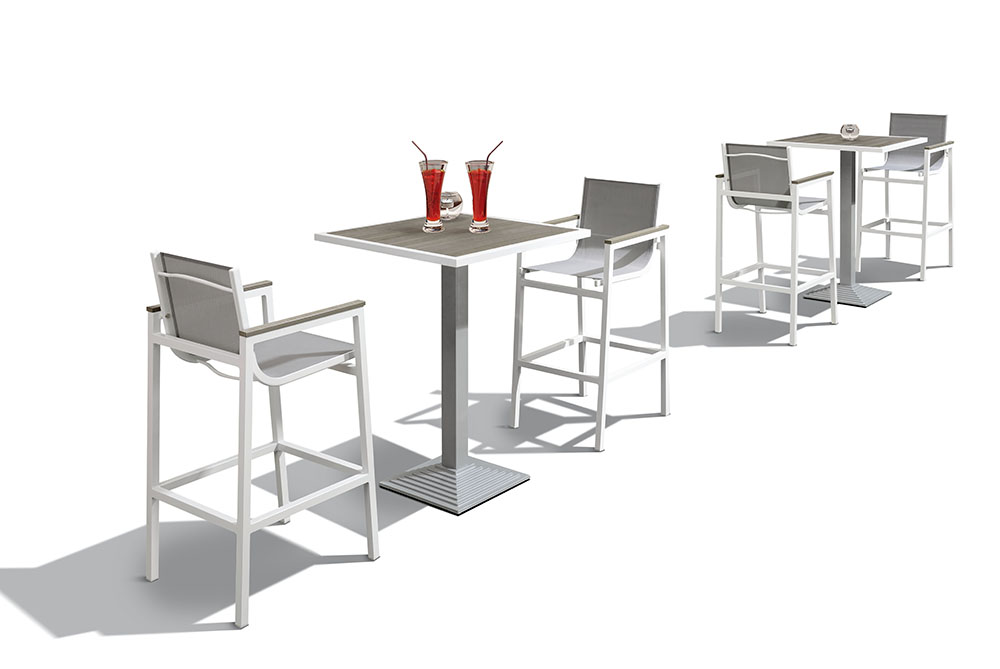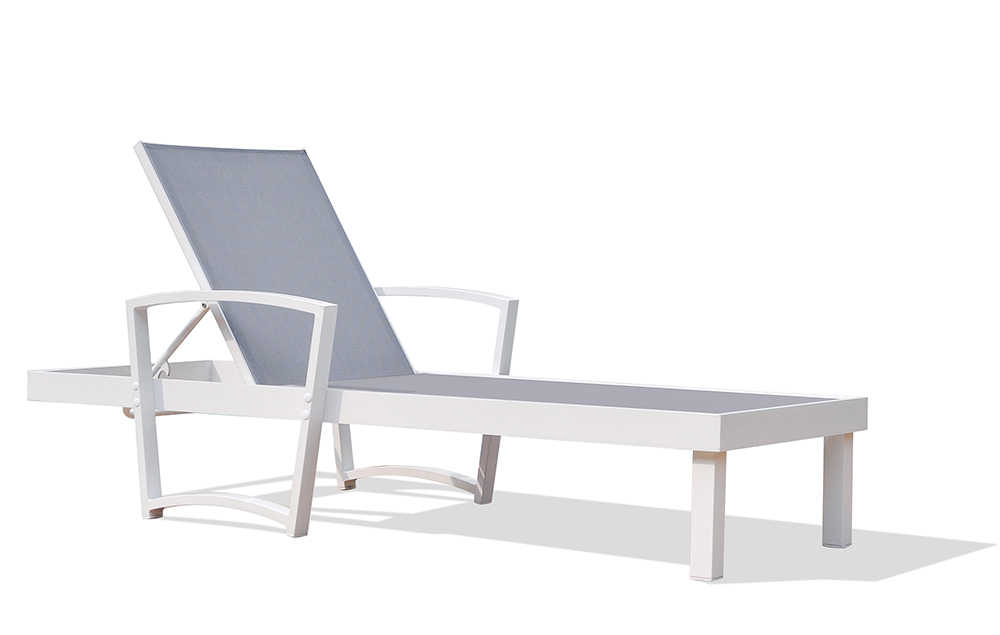Record system adjustment (1) Adjust the optical elements in the optical path so that the optical path lengths of the object light and the reference light from the beam splitter to the dry plate are as equal as possible (the maximum optical path difference is within the coherence length of the laser used). The intersection angle of the object light and the reference light should not be too large, the maximum is 60°~90°, and the illuminated object must be able to be effectively irradiated with light. Determine exposure time The method for determining the exposure time is to perform a preliminary experiment based on the sensitivity of the dry plate to determine the exposure. As shown in Fig. 10-55, on a dry plate, the exposure time was divided into several sections at intervals of 1 to 2 s, and then the dry plate was developed. Select the appropriate exposure time from the result. Amplitude hologram fixing The coating of the holographic dry plate is a silver halide latex. During exposure, the silver ions Ag+ and the halogen element ion Br- are decomposed, and the electron e- is ejected due to the photoelectric effect, and the electrons are neutralized with the metal silver ions to generate metallic silver. The particles are scattered in the latex. The number of silver particles increases with exposure to form a latent image. By the development, the silver-containing portion is reduced to a reduction center, a large amount of silver bromide is reduced to metallic silver, and silver particles having different densities absorb different light, thereby forming an image. Fixing removes the silver halide from the unexposed portion of the latex and the residual silver halide from the exposed portion. In this way, after the exposure of the hologram plate, an amplitude-type hologram was obtained after the development and fixing treatments. The most common developer used in holographic processing is the Kodak D-19 and the fixer F-5. Its operation is as follows: 1 Development In accordance with the type of developing solution marked on the dry plate and the development time, under the safe light, the exposed dry plate is quickly put into the D-19 developer soak, the emulsion is face up, stir the developer, about 2min The optical density is about 0.5 to 0.7, and the water is washed for 30 seconds. For the use of continuous laser recording, the desensitized latex formulated with 600 mL of phenolic safranine and 1 L of methanol instead of the fixing solution for 3 minutes can improve the quality of the hologram. Phase hologram development and fixing process The hologram produced with the holographic plate was bleached to obtain a phase hologram. The phase hologram has two types of relief (thickness modulation) and refractive index modulation. The phase hologram of the holographic dry plate after bleaching is dominated by the refractive index modulation. There are many kinds of bleaching, which can be roughly divided into three categories: ordinary bleaching, non-fixing bleaching and fixing after bleaching. 1 Normal Bleaching The main process of bleaching is the amplitude hologram formed by developing and fixing, and then bleached into a phase-type hologram. After bleaching, the silver metal forms a transparent silver salt, the refractive index of the silver salt is greater than that of gelatin, so that refractive index modulation is produced, which can be illustrated by FIG. 1 . (a) in the figure shows that after exposing, the exposed portion in the gelatin by development and fixation contains metallic silver microparticles; (b) shows that after bleaching, the silver particles in the exposed portion become transparent silver salt (c) shows the exposed portion in the drying process Due to the deuteration of gelatin, the surface of the gelatin is deformed to form a surface relief. When the spatial frequency of the hologram is less than 200 lines/mm, the relief is more obvious; when the spatial frequency is large, the relief is small. In addition, modulation of the relief modulation and the refractive index are additive. The ordinary bleaching procedure is the same as the amplitude hologram, except that a bleaching procedure and water washing are added after fixing the water, and the bleaching time is generally prolonged for the same time after the bleaching. Changing the subsequent processing can improve the diffraction efficiency. The procedure for improving the diffraction efficiency is: (a) developing D19 developer 1:10 dilution developed 2min, washed 30s; Fig.1 Normal Bleaching DiagramFig.2 Reverse Bleaching Diagram The process of no reversal bleaching is shown in Figure 2. In the figure, (a) shows that the exposed portion of the latex after exposure and development is metallic silver, and the unexposed portion is silver halide. (b) indicates that the metallic silver becomes a soluble silver salt upon bleaching so that it can be removed from the latex and the unexposed portion remains silver halide. This is exactly the opposite of ordinary bleaching, so it is called inversion bleaching. (c) Relief that occurs when the surface of the exposed portion is degraded due to gelatinization during drying. In this case, the effects of surface relief modulation and refractive index modulation are destructive. No fixing bleaching procedure is as follows: Non-fixing rehalogenated bleaching bleaches contain an alkali metal compound such as potassium bromide. It can make the developed metallic silver into silver bromide, and the phase modulation is formed because the unexposed portion of the silver halide diffuses toward the exposed portion. The advantage of this bleaching method is that the latex layer changes minimally. 3 Fixing after bleaching First bleaching After fixing, the sensitivity of the silver halide latex is used. After processing, a hologram having the same properties as the dichromate gelatin (DCG) (high diffraction efficiency, low noise) is obtained, so it is also called Silver halide sensitized gelatin hologram (SHSG). The bleaching procedure is: (a) Development D-1 developer, 5mins, 20oC, washed 30s; (a) Developing with DK-20 for 4 min, running water for 1 min;
Sling COLLECTION
Sling collection combines clean contemporary
lines with the functionality of worry free materials. Constructed using plastic
wood armrest / top, sling chair features with recycled wood frames and grey
high density sling upholstery. The simplicity
associated with modern designs along with mortise and tenon joinery put it on
top of the outdoor sling category.
Quick Overview
• Rust proof aluminum frame
• Powder coat Gloss White finish
• High density textilene outdoor fabric
• Recycle plastic wood arm caps
• 3 year frame and finish warranty
• 2 year fabric warranty
5PCS DINING SET
3PCS BAR SET
ADJUSTABLE CHAISE LOUNGE
(2) The light path is adjusted so that the light energy of the object can reach the dry plate effectively, and the optical path can be reached so that the light beam balance can be adjusted later. The intensity ratio of the object light and the reference light at the dry plate position is measured with an optical power meter, and the beam splitter is adjusted so that the intensity ratio of the two reaches a predetermined value according to the size and type of the imaged object (for example, when a two-dimensional reflection hologram is taken) The intensity ratio is 1:1 to 3:1) to determine the exposure time (for two-dimensional transmission holograms, the intensity ratio is 2:1 to 10:1).
(3) Since the shutter is shaken during the switch, it is often transmitted to the recording hologram. Therefore, the shutter should be separated from the plane of the recording hologram, and be mounted separately or on the recording platform to fix the shutter to reduce vibration.
When the exposure is performed, after the dry plate is mounted on the dry platen, the exposure shutter can be opened for exposure only after 30 minutes due to slight vibration. When the operator operates, do not move the body and pant large enough to avoid vibrating the air.
2 Stopping for 30s in SB-1 stopping solution and taking out for 30s.
3 Fixing Fixing does not need to be done under a safety light. Can be operated under conventional lighting. Soaking in fixing solution F-5 for 3 to 5 minutes, during the fixing process, the fixing solution is agitated, and during this time, the photoresist gradually becomes transparent. After the dry plate is completely transparent, the fixing is continued, which is about twice as long as the dry plate is placed in the fixing solution until it becomes transparent. When using a firm fixing solution, it is best to soak for 10 to 20 minutes.
4 washing in running water rinse 5min, when washing, pay attention to the flow of water to ensure that the dry version does not overlap, so as to avoid dry marks. The water temperature of the water is not higher than 25oC to prevent the photosensitive film from falling off.
5 Remove the sensitizer soaked in methanol or ethanol for 3 minutes.
6 Dry out and dry naturally. If the sensitizer is not removed, it should be finally cleaned with distilled water to avoid contamination of tap water impurities.
(b) stop using SB-1 for 30s after stopping for 30s;
(c) After the fixing is fixed with F-24, water is rinsed for 1 min;
(d) bleaching bleaching with acid iron bleach and washing with water for 1 min;
(e) The firm membrane is solidified with alkaline formaldehyde through a membrane-forming solution for 2 min and washed with running water for 5 min;
(f) swelling is soaked in warm water of about 35oC for 10 min;
(g) Dehydration is first soaked with 50% isopropanol for 32 minutes and then soaked with 100% isopropanol for 4 minutes;
(h) Drying After taking out the dried plate, it is blown with hot air and then blown with cold wind (prevents blooming). 
2 No fixing bleaching There are two kinds of fixing bleaching, one is inversion bleaching, and the other is rehalogenation bleaching.
(a) Developing with SD-48 for 5 min, 24oC, washing 30s;
(b) stop display with 21 ~ 27oC SB-1 stop 30s, wash 1min;
(c) bleaching with 21-9oC R-9 bleaching 3min, wash 5min;
(d) In addition to color with 21 ~ 27oC S-13A liquid color 1min;
(e) cleaning with 21-27oC S-13B liquid cleaning 1min, water wash 5 ~ 10min;
(f) dehydration soaked in 50% methanol for 3 minutes, then soaked in 100% isopropanol for 4 minutes;
(g) Dry naturally at room temperature.
(b) stop using SB-1 to stop the display, 30s, wash 1min;
(c) bleaching with R-9 reverse bleaching, 3min, running water for 10min;
(d) Cleaning with S-13, B liquid, 1min, running water 5min;
(e) fixing with F-24 fixing 3min, running water 5min;
(f) soaking with distilled water soak 2min;
(g) dehydration soaked with 50% isopropanol for 3 min, then soaked in 100% isopropanol for 4 min;
(h) Drying is performed at room temperature for 30 minutes before drying in a desiccator with calcium chloride for 15 hours.
The procedures for fixing after normal bleaching are:
(b) Deuterated or non-deuterated bleaching for bleaching. After bleaching washed 1min;
(c) Fixing with F-24 fixing, 3 min, running water for 5 min;
(d) Swelling soaked in distilled water at 35oC for 10 min;
(e) dehydration soaked in anhydrous ethanol for 2 minutes and soaked in isopropanol for 4 minutes;
(f) Drying is dried under 20<50% RH.



Sling Patio Furniture,Textile Fabric Sling Patio Furniture,Outdoor Sling Patio Furniture,Garden Sling Patio Furniture
Golden Eagle Outdoor Furniture Co., LTD. , https://www.geoutdoor.com
